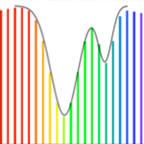DARPA issued a solicitation for proposals responsive to its Spectral Combs from UV to THz (SCOUT) program, which seeks new capabilities for highly sensitive remote detection of multiple biological or chemical agents in liquid or gaseous forms.

Molecular absorption profile superimposed on the modes of an optical frequency comb (courtesy NIST)
Spectroscopic chemical sensing, which measures the frequency of light absorbed or scattered from a substance to help determine its molecular identity, can be used to detect traces of biological and chemical agents and residue from explosive materials. Current capabilities in operational military environments, however, lack the sensitivity and broad spectral coverage needed to detect and distinguish among deadly chemicals and the“frequency clutter” generated by common components in the atmosphere.
The SCOUT program aims to overcome these shortcomings by harnessing optical frequency comb (OFC) technology, which is akin to using thousands of lasers simultaneously (like extremely fine teeth on a hair comb) to enable both high sensitivity and wide spectral coverage for detecting multiple types of substances at extended distances.
“In laboratory settings we’ve seen proof of principle that it’s possible to identify and quantify multiple substances at a distance of 2 kilometers or more, but no portable sensors exist today that can detect and distinguish among multiple chemical or biological agents in gas or liquid form at even half that distance,” said Prem Kumar, DARPA program manager. “The challenge DARPA is addressing is to develop portable, microchip-size optical frequency combs that display a high degree of sensitivity and specificity across the electromagnetic spectrum, even in a cluttered frequency environment.”
The program has identified four spectral regions for technical development of chip-scale OFCs and potential uses: Ultraviolet to visible (useful for biological threat detection and real-time monitoring of chemical reactions); mid-wave infrared (useful for breath analysis applications); long-wave infrared (useful for detection of explosives); and submillimeter/terahertz (useful for detection of complex molecules). Additionally, SCOUT aims to develop new techniques in chem/bio sensing that exploit the unique properties of optical frequency combs.
The SCOUT program seeks expertise in optical materials processing and device fabrication, chip-based OFC generation, high-resolution metrology and molecular spectroscopy, algorithm development and data processing, as well as domain expertise in trace level chemical and biological threats detection to achieve success in the program. The Broad Agency Announcement (BAA) solicitation was released and is available on FedBizOpps at http://go.usa.gov/w4HQ.
Advertisement
Learn more about DARPA





